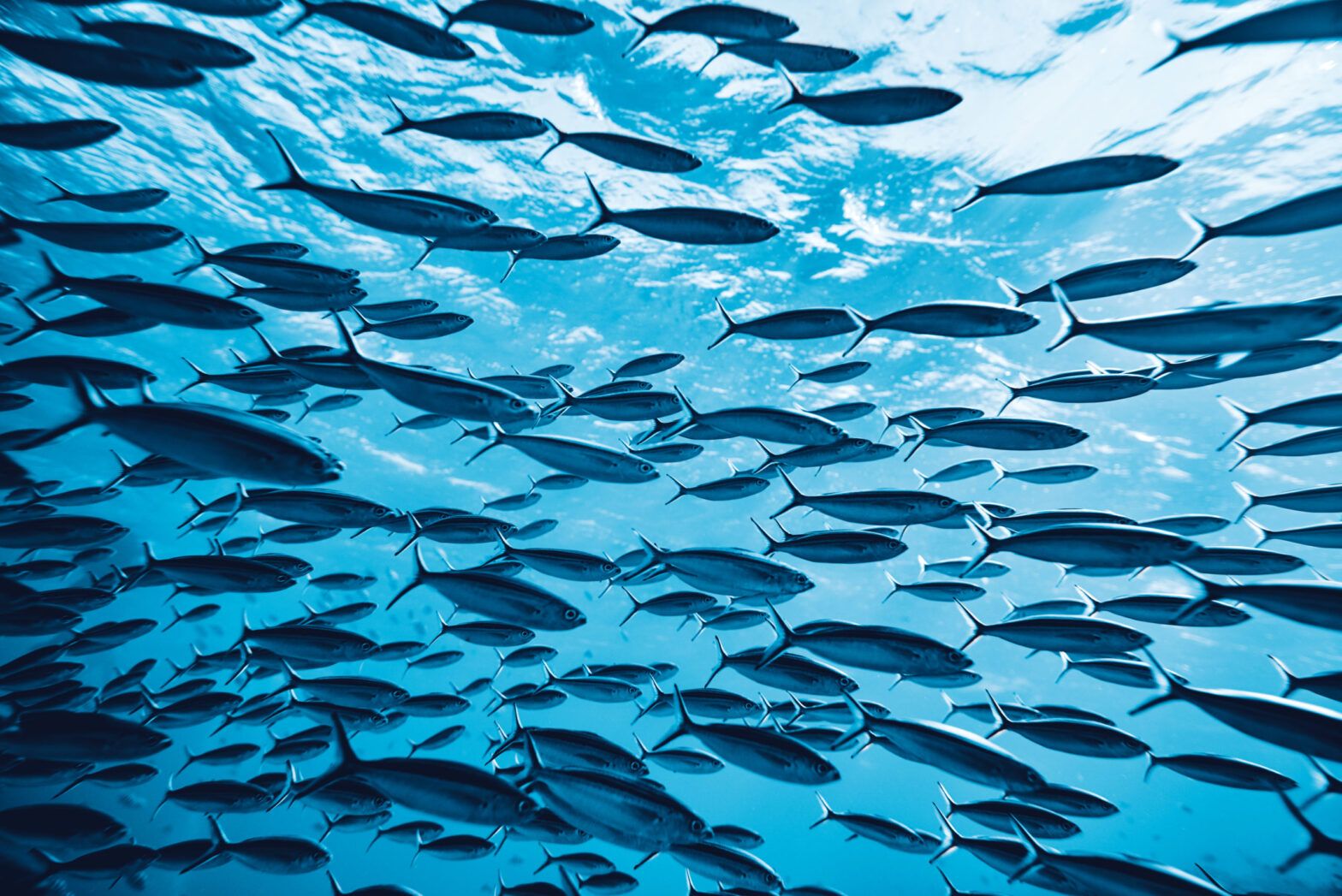Previously seen as the frontier of ESG investing and the purview of NGOs, ocean-related opportunities are gradually becoming more mainstream, but general levels of engagement by companies on ocean health continues to be low.
More than 3 billion people rely on the ocean for their livelihoods, but the sustainability of our oceans is under severe threat, with fishery collapse, ocean warming and acidification, plastic pollution, and a rise in ‘dead zones’ lacking sufficient oxygen to support marine life. Estimates suggest around $175bn per year is needed to tackle these challenges and deliver on Sustainable Development Goal 14 (Life Below Water).
But a 2019 PWC report found SDG 14 was mentioned by only 26% of companies in their financial and sustainability reporting, compared with 86% citing action for decent work and economic growth and 80% mentioning climate action.
However, some of the main sectors where we are seeing an increase in investor interest are aquaculture, energy, shipping and plastics.
Aquaculture
The ocean is already a critical food source, but innovation is needed to transition it to achieving healthy, nature-positive, resilient ‘blue food’ systems.
The FAO estimates that total aquaculture production has grown from 74m tons in 2006 to 114m tons in 2018. Although this has the potential to be more sustainable than catch fishing, two major issues need to be tackled.
First, finding suitable locations for production that minimise the impact on coastal ecosystems. Second, finding substitutes for captured natural fish for fishmeal production. Innovation has helped with the second of these challenges, offering more sustainable alternatives – such as DSM’s use of marine-based algae. Related solutions aim to use sea food waste or biproducts as fish feed ingredients.
Oslo-based seafood producer, Grieg, raised 1bn NOK in 2020 through a floating rate green issue that explicitly targeted improved and sustainable salmon agriculture. This bond issue also included a clause around not using soya from a particular producer due to the perceived risk of deforestation of the Amazon. With the continued rise in sustainability-linked loans over 2021, it seems likely that interest in blue issuance, tied to specific ocean-related targets, will increase.
Energy
Like land-based solutions, ocean-based energy is a sector in transition. Around a third of value added from the ocean economy derives from offshore oil and gas. In order to meet the trajectory of the Paris Agreement, a significant shift in investment towards marine renewables is needed. Offshore wind has already grown, particularly in northern Europe. Although less commercially attractive, given they are at an earlier stage, opportunities are growing in newer areas such as tidal energy, floating solar, wave energy and ocean thermal conversion.
Shipping
Another key transition sector is shipping. Shipping emits significant greenhouse gasses and pollutants into the water and air, emitting 1 billion tonnes of CO2 into the atmosphere each year. WWF estimates $874bn is at risk in the ports and shipping industry alone in a business-as-usual climate scenario.
See also: – Renewables present solutions to ocean pollution
Shipping also has negative impacts on the marine ecosystem. As an example, ballast water discharge by ships can introduce organisms to non-native ocean territories, which in turn can cause extensive damage to aquatic ecosystems. Alfa Laval recently launched PureBallast 3, which is a third generation ballast water treatment system, designed to remove biological organisms from ballast water. The IMO recently revised its guidelines to ensure more robust and stringent discharge requirements. Alfa’s system was the first on the market to comply with these revised guidelines, and this is providing a strong retrofit and new build market.
Plastics
The International Union for the Conservation of Nature estimates 8 million tons of plastic end up in our oceans every year and that plastics make up 80% of all ocean debris. Plastics innovation recognises the need to reduce the volume of plastics going into the oceans and minimising its impact once there.
Tomra is a good example of circular innovation to reduce plastic waste – its reverse vending machines encourage the return of used plastic bottles. Michelin stopped participating in Formula 1 citing the unacceptably high levels of plastic particles from tyres during races. Danimer Scientific has created a range of PHA-based plastics and resins that exhibit a similar degradation profile to cellulose and are fully biodegradable in a number of aerobic and anaerobic environments.
As companies step up to the challenge of making the blue economy more sustainable, investors have the opportunity to finance the much-needed innovation that will enable and accelerate a more resilient ocean.








